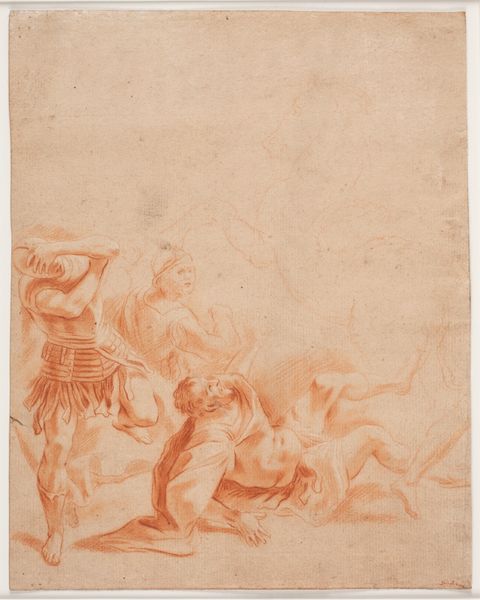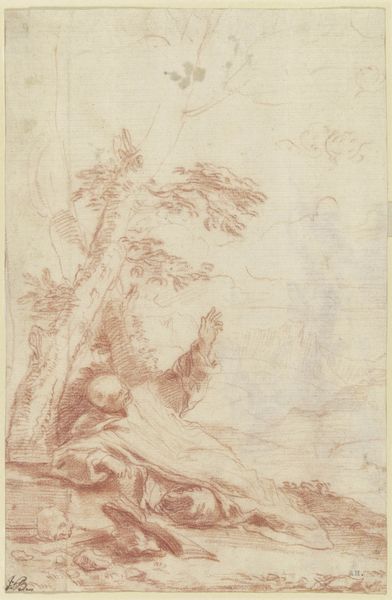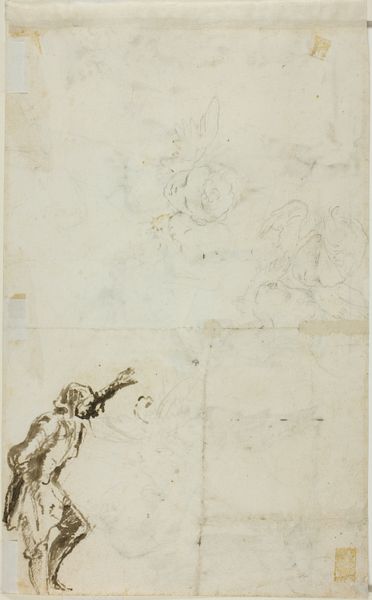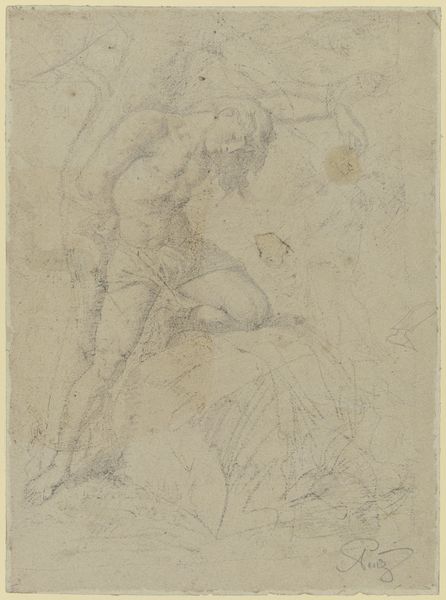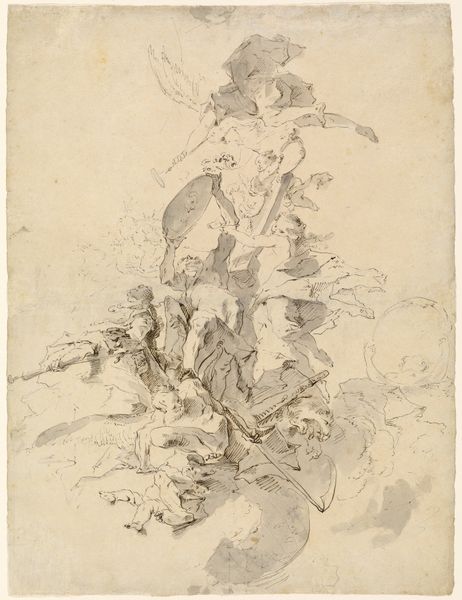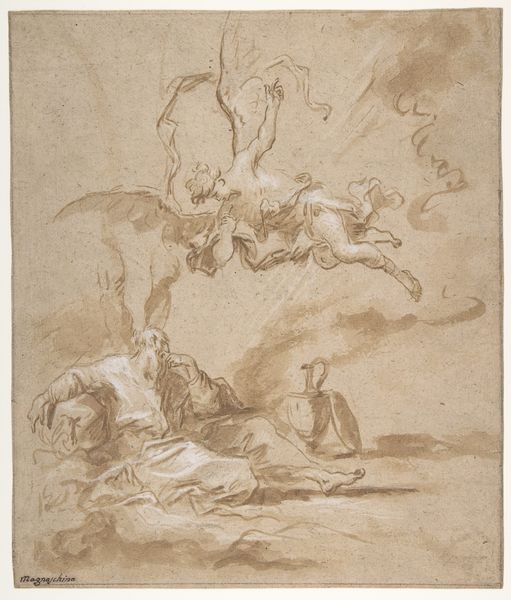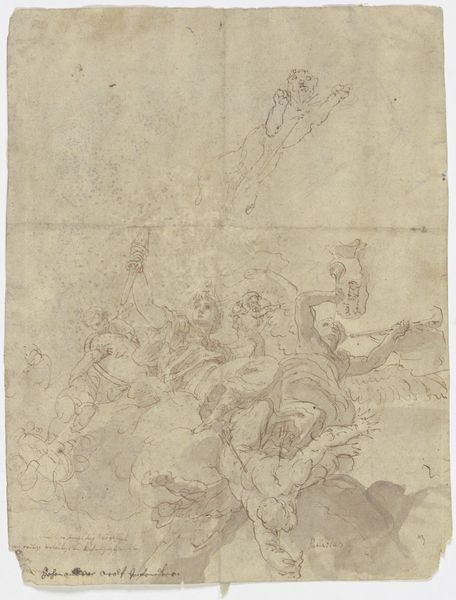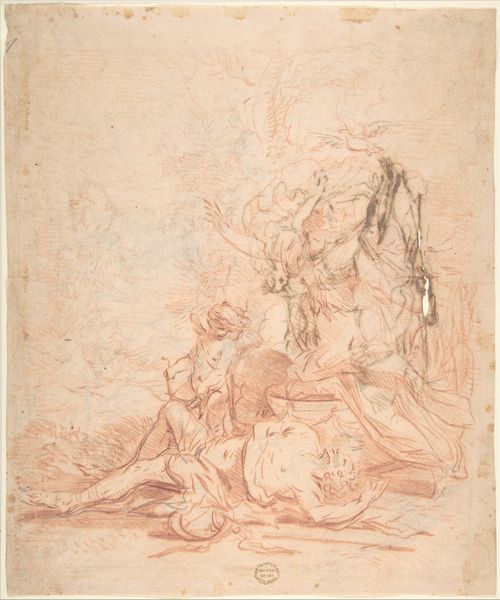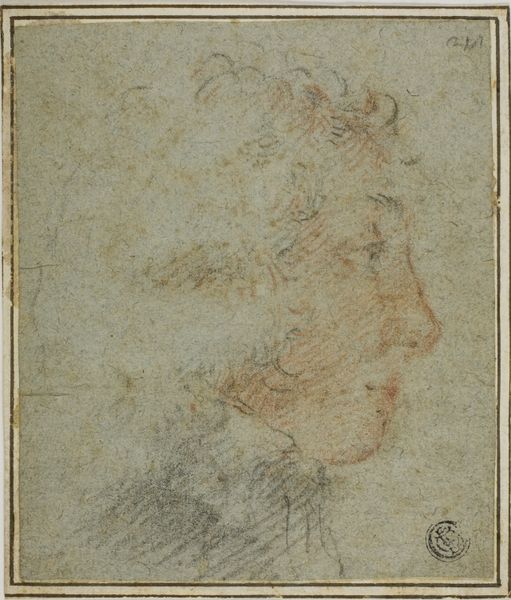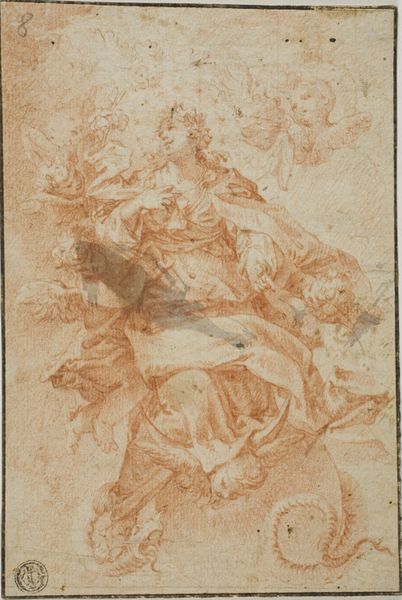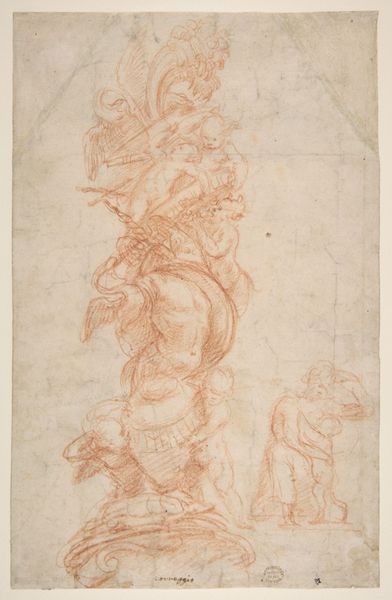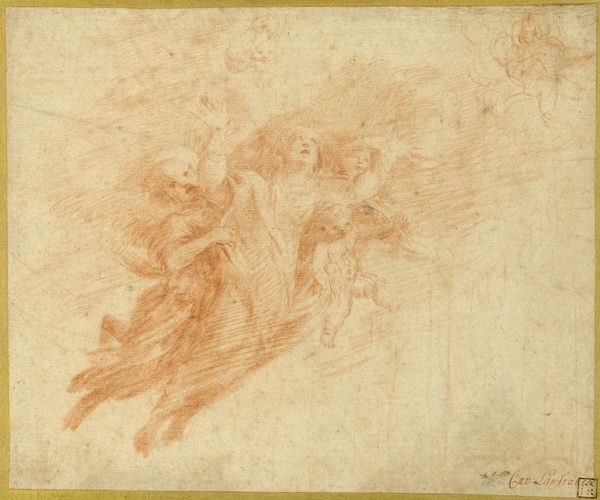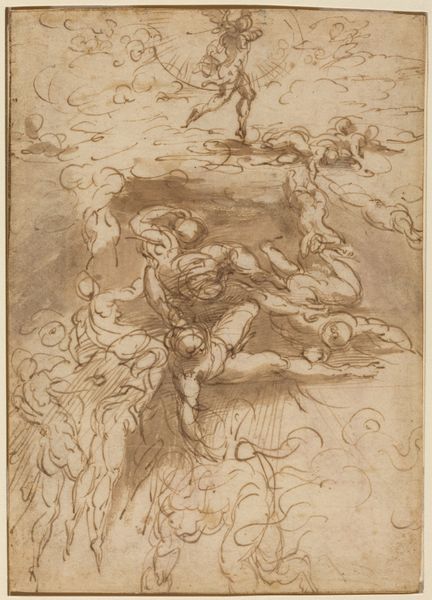
drawing, chalk
drawing
baroque
landscape
figuration
chalk
history-painting
Copyright: Public Domain
Curator: I’m struck by the raw energy emanating from this chalk drawing. What is your initial response? Editor: There's a quiet drama here, a sort of suspended anticipation. The red chalk lends it a warmth, but also an immediacy, almost as if the vision is unfolding before our eyes in real-time. Curator: Exactly. This piece, circa 1660, is Pier Francesco Mola's "Vision of Saint Bruno", currently residing at the Städel Museum. Mola captures the moment of Bruno’s enlightenment. The relatively loose sketching is interesting; history painting typically seeks high degrees of polish. Editor: Absolutely. And that roughness enhances the mystical qualities, doesn’t it? Notice the landscape—or lack thereof. There's a hint of nature around St. Bruno himself, then wisps dissipating upward, and almost nothing else, creating a stage for this profoundly personal moment. It suggests a transition, a shedding of the earthly for something divine. Curator: Precisely. Mola utilizes figuration here in conjunction with what barely constitutes landscape to create this emotional weight and amplify Bruno's solitary connection to the divine. Red chalk itself, a relatively immediate medium, also bolsters the sense of intimacy. He's not merely depicting the scene but rather providing us access to Bruno's spiritual state. Editor: And that head thrown back, the hand raised—the classic posture of revelation, of submission to something greater. The skull adds a fascinating element, the 'memento mori' constantly reminding him of the transitory nature of human existence, reinforcing Bruno's radical choice to embrace isolation and spirituality. Is this drawing of significance for his wider output, his overall development as an artist? Curator: While Mola is mostly known for his paintings, especially frescoes, it showcases his exceptional skill as a draughtsman. I think this artwork also anticipates trends. His work demonstrates the emotional turbulence and heightened spirituality that Baroque artists aimed to convey. In that regard, the work fits right into the moment. Editor: So we are invited not just to observe Saint Bruno’s vision, but perhaps also to consider our own search for meaning. Curator: Indeed. A work like this reveals much about artistic and social transitions during the period.
Comments
No comments
Be the first to comment and join the conversation on the ultimate creative platform.
